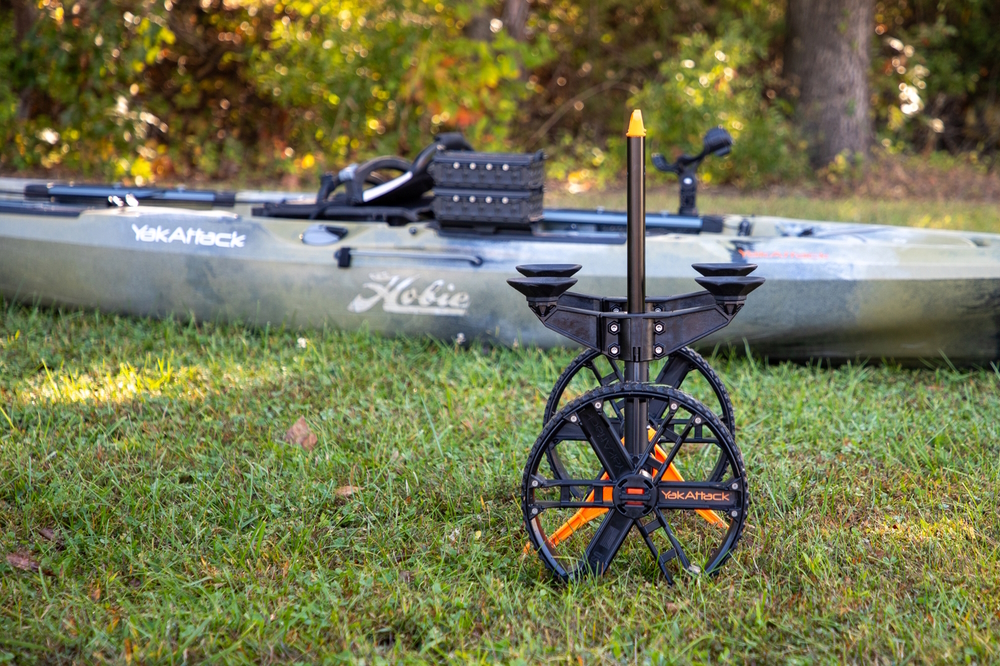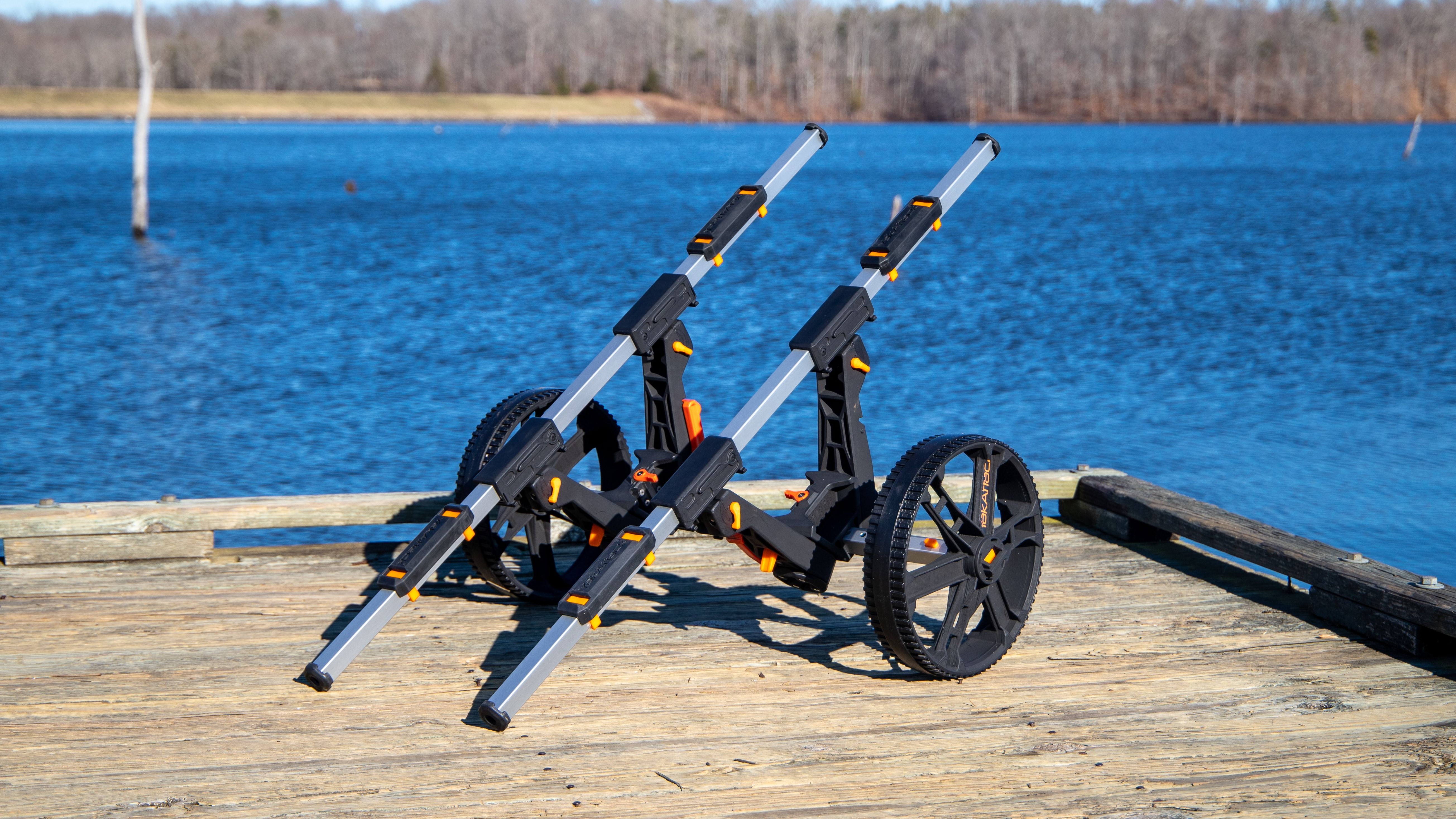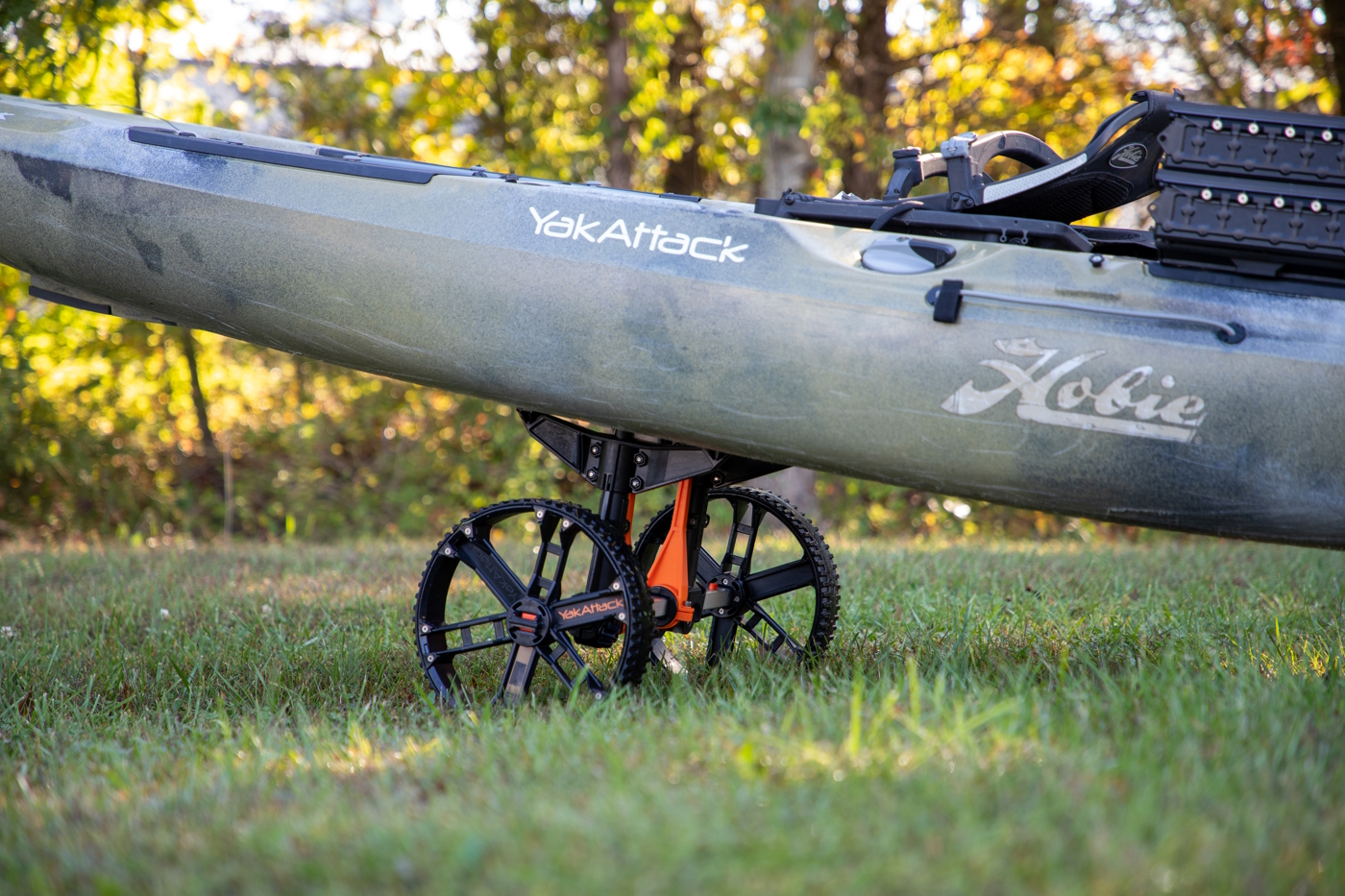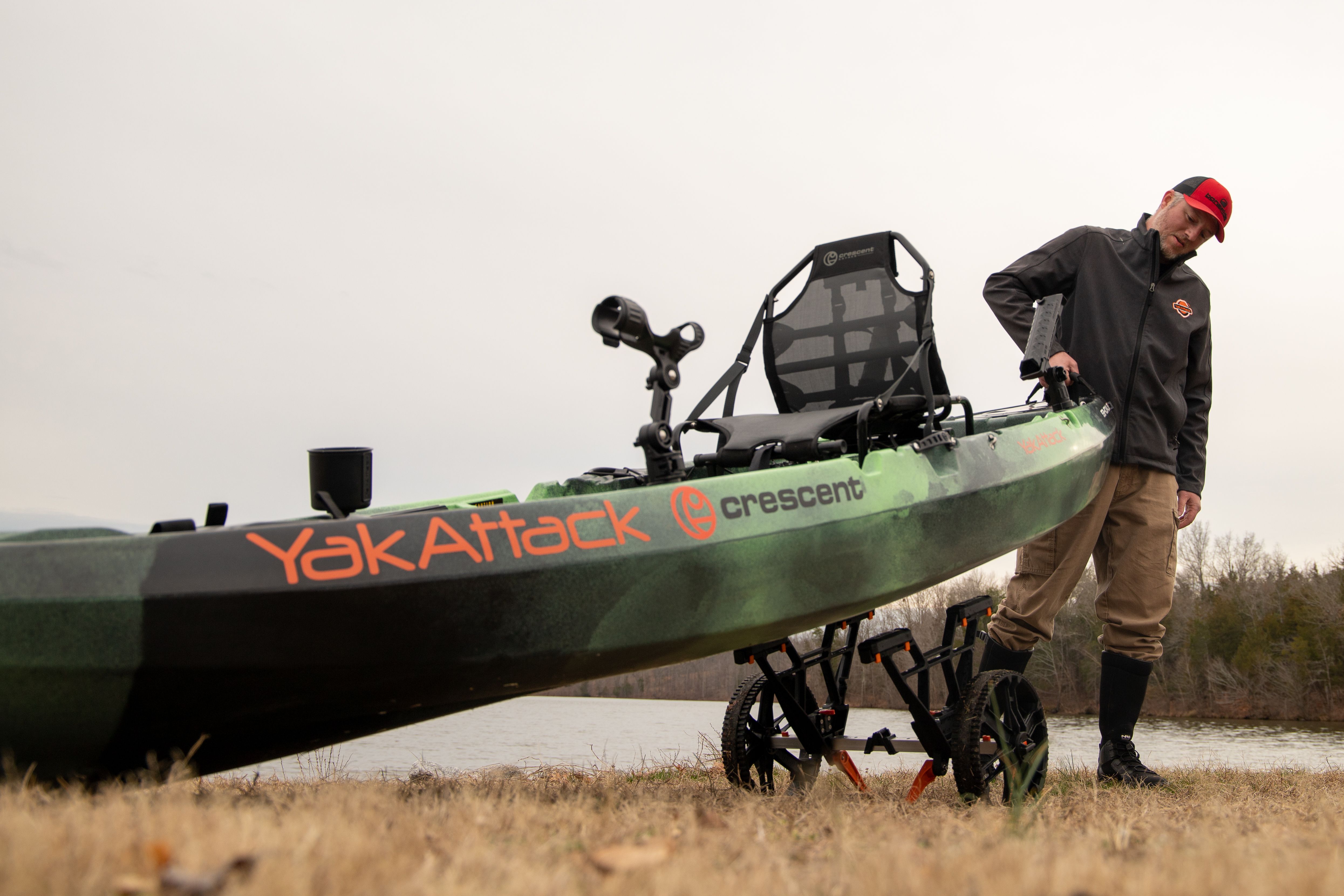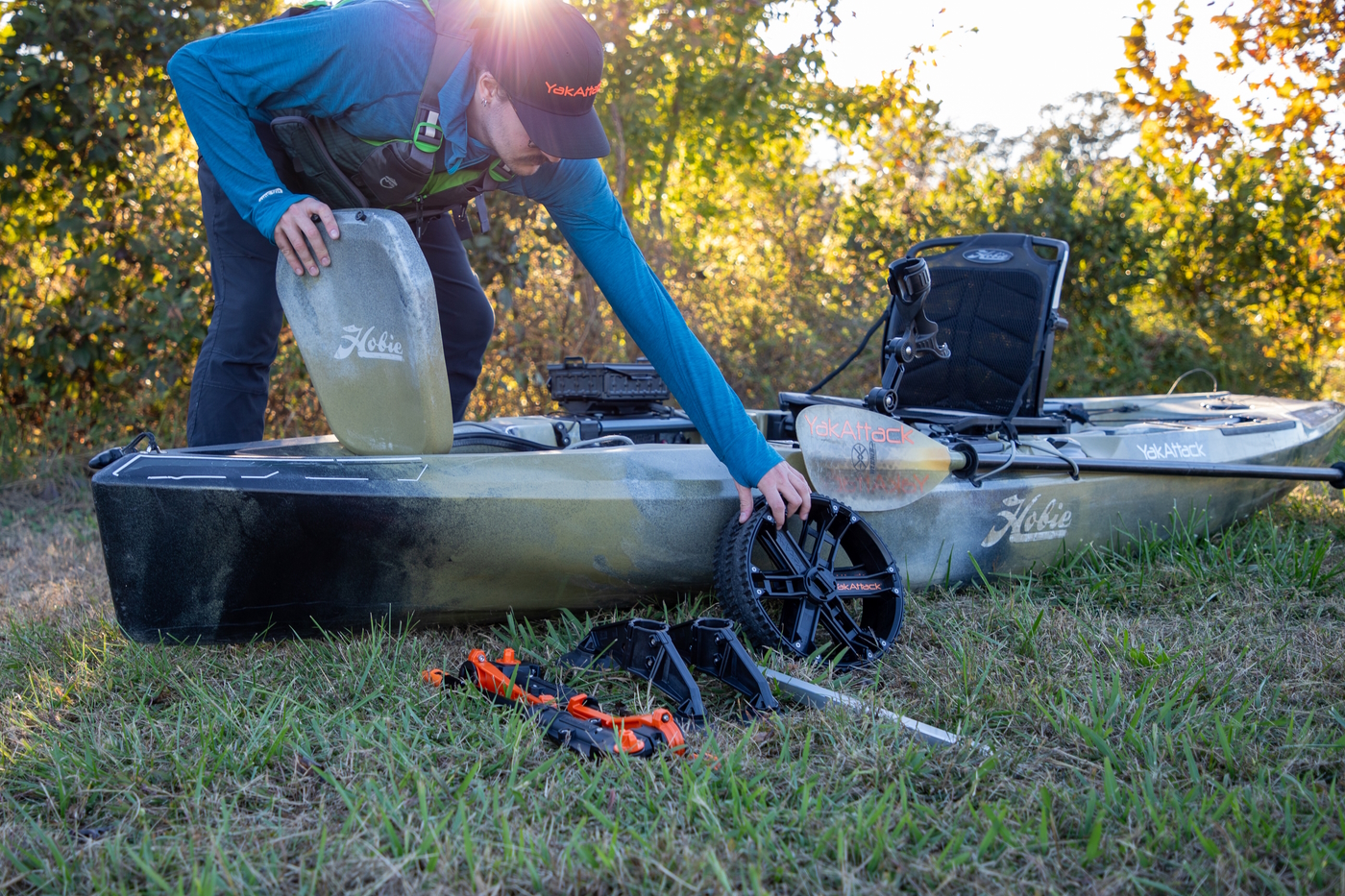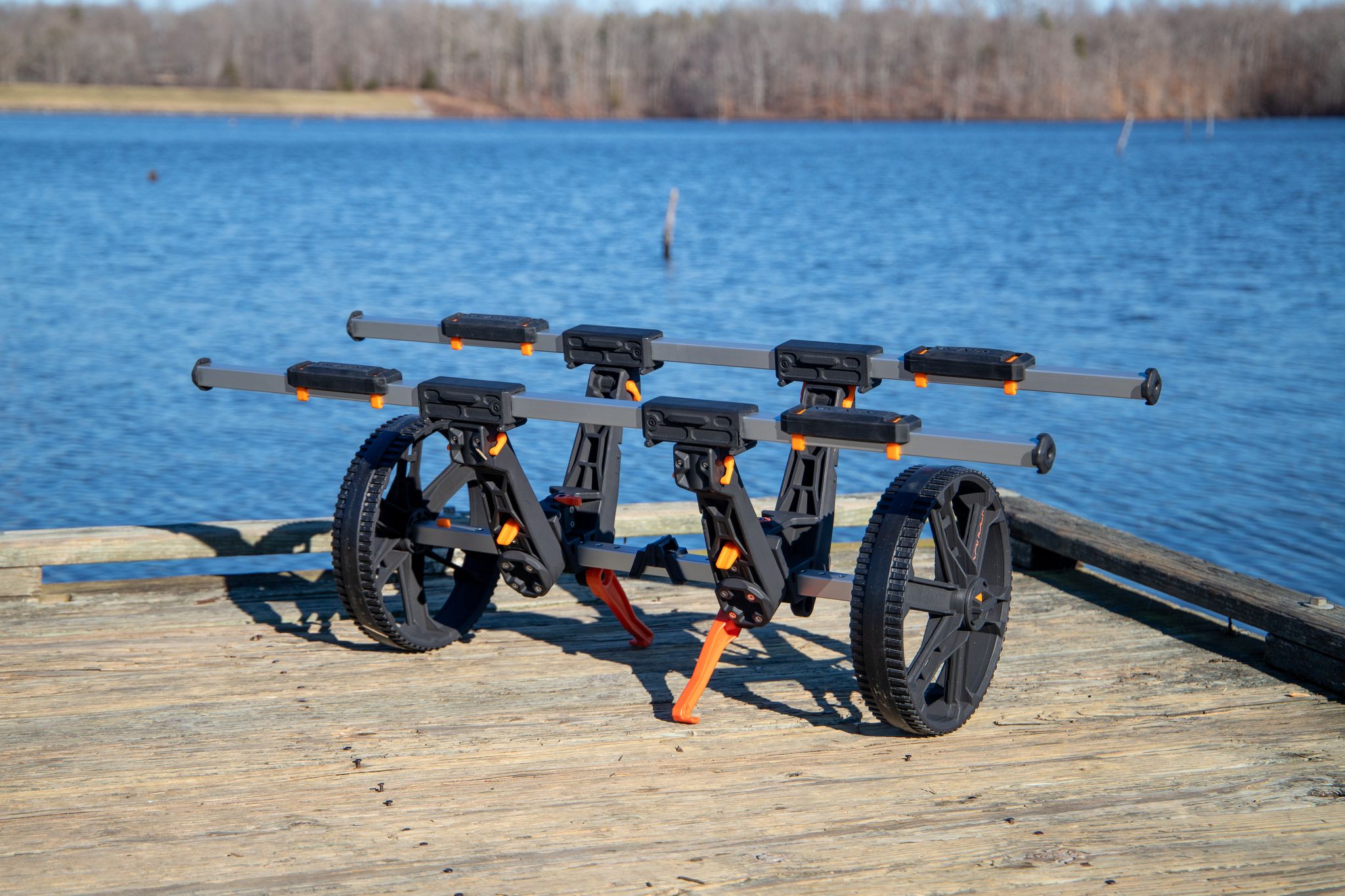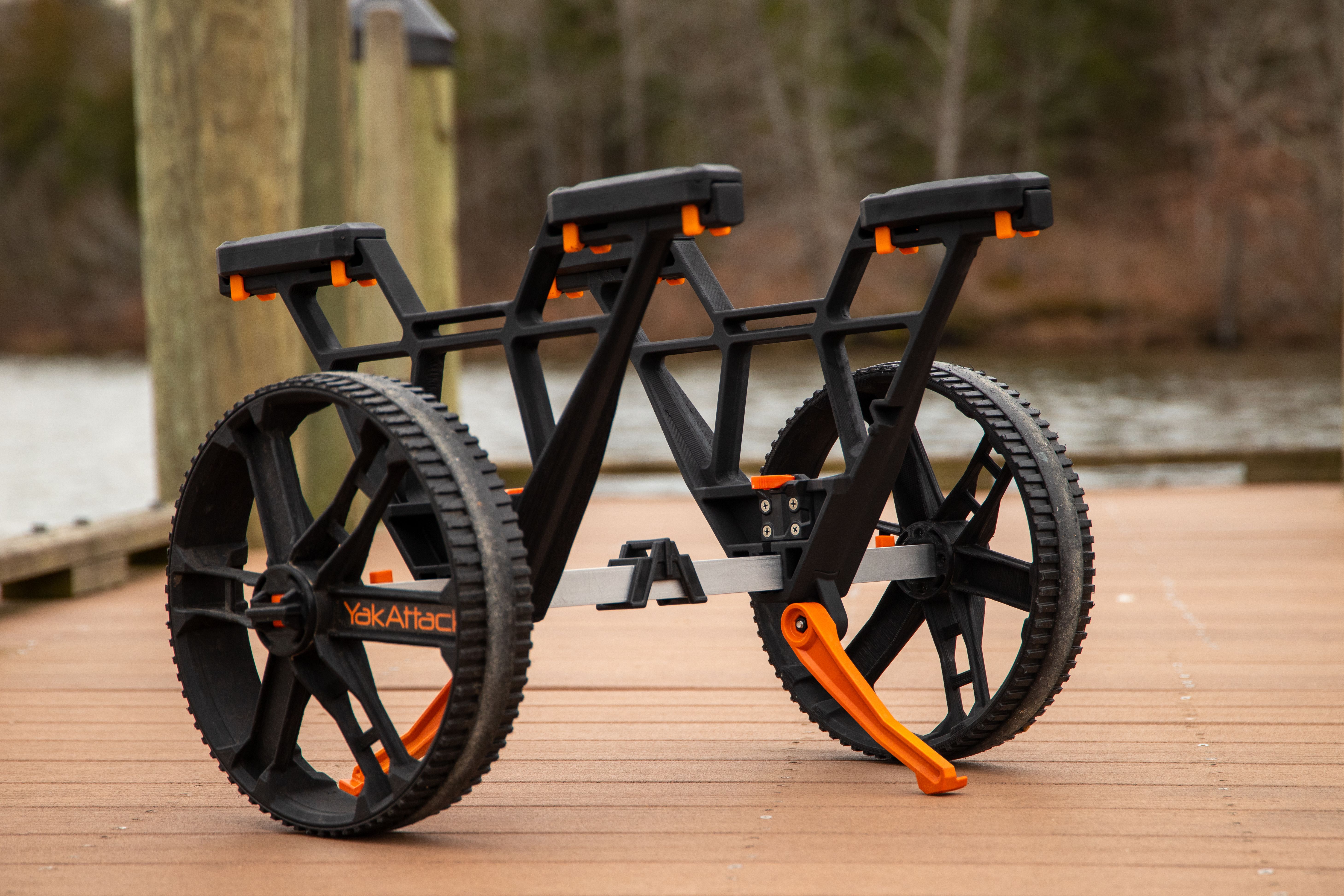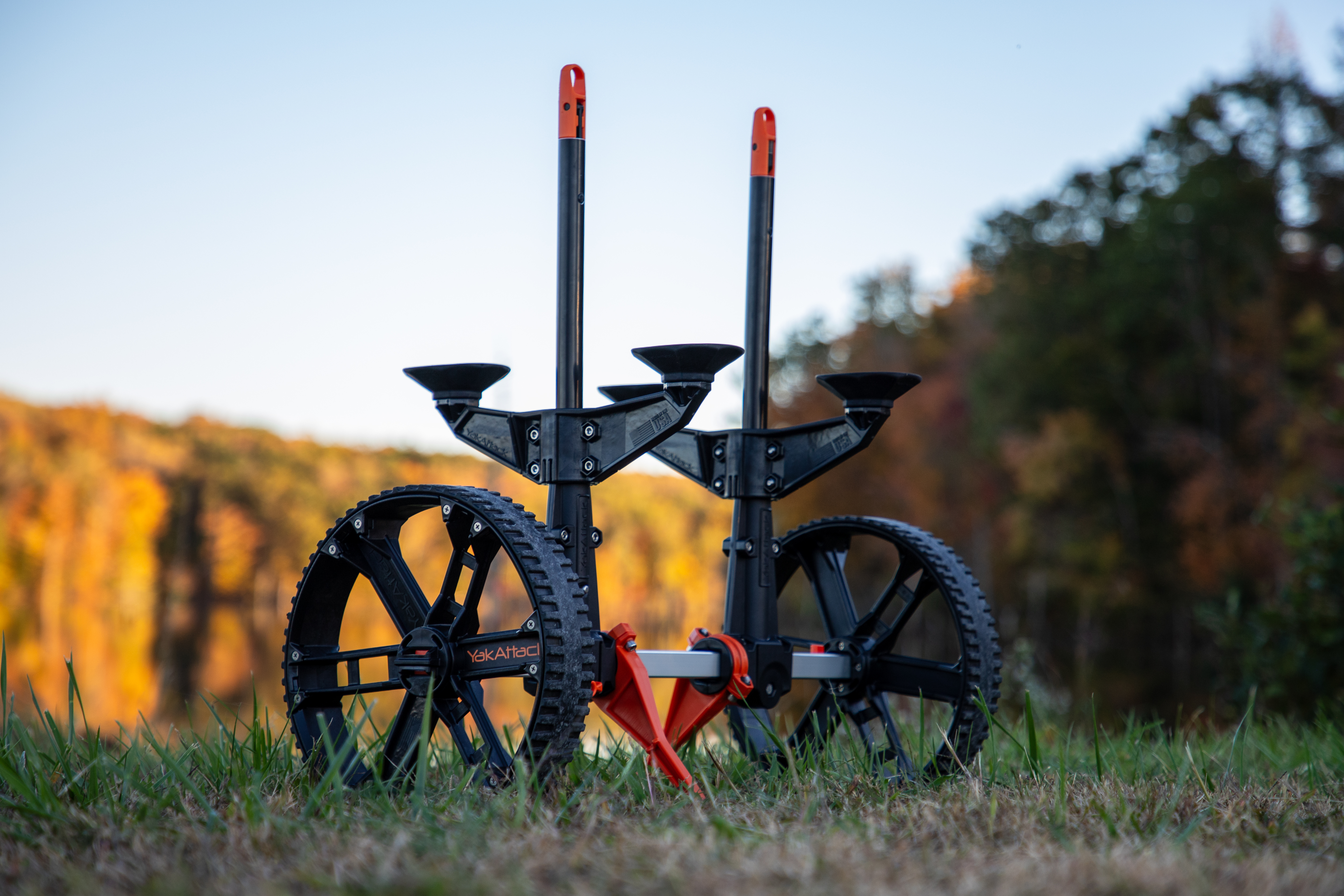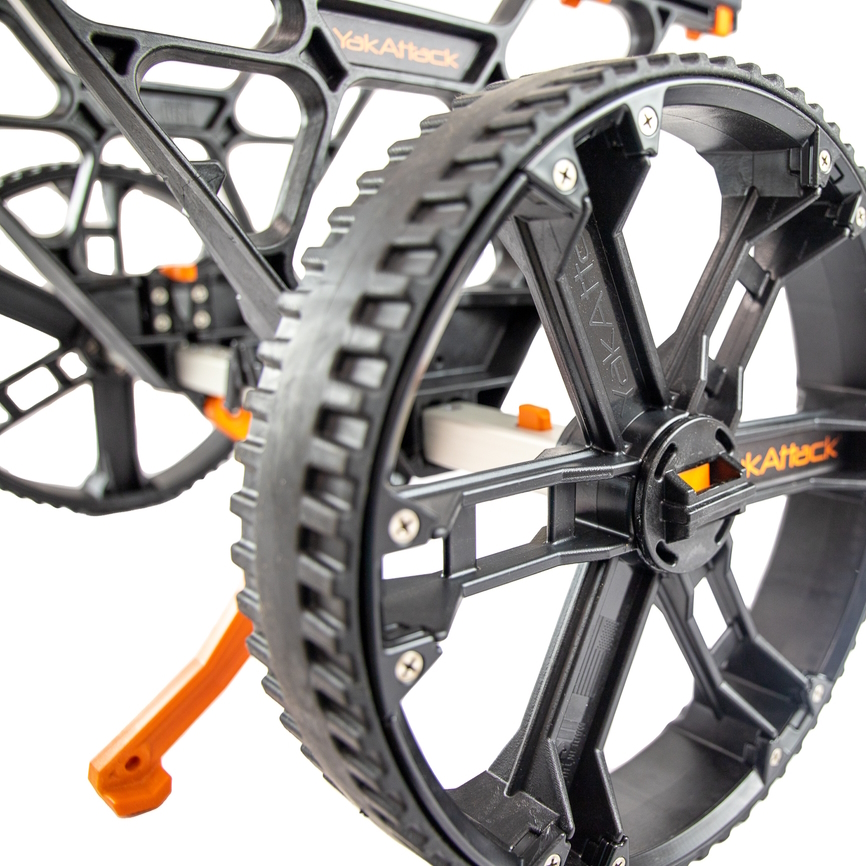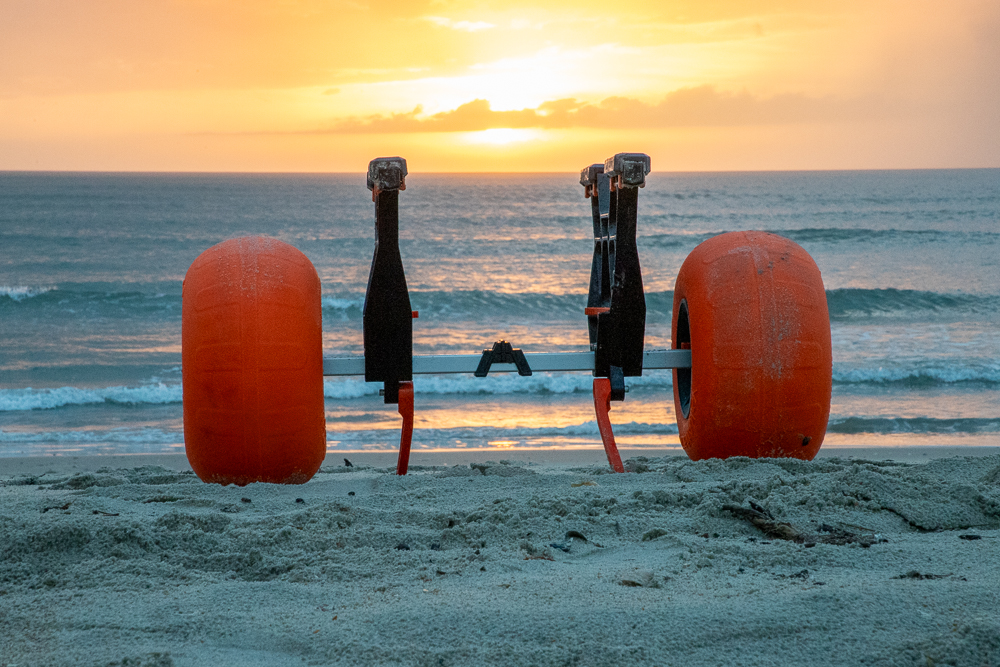YakAttack TowNStow Kayak Carts
How-to & Fitment Guide
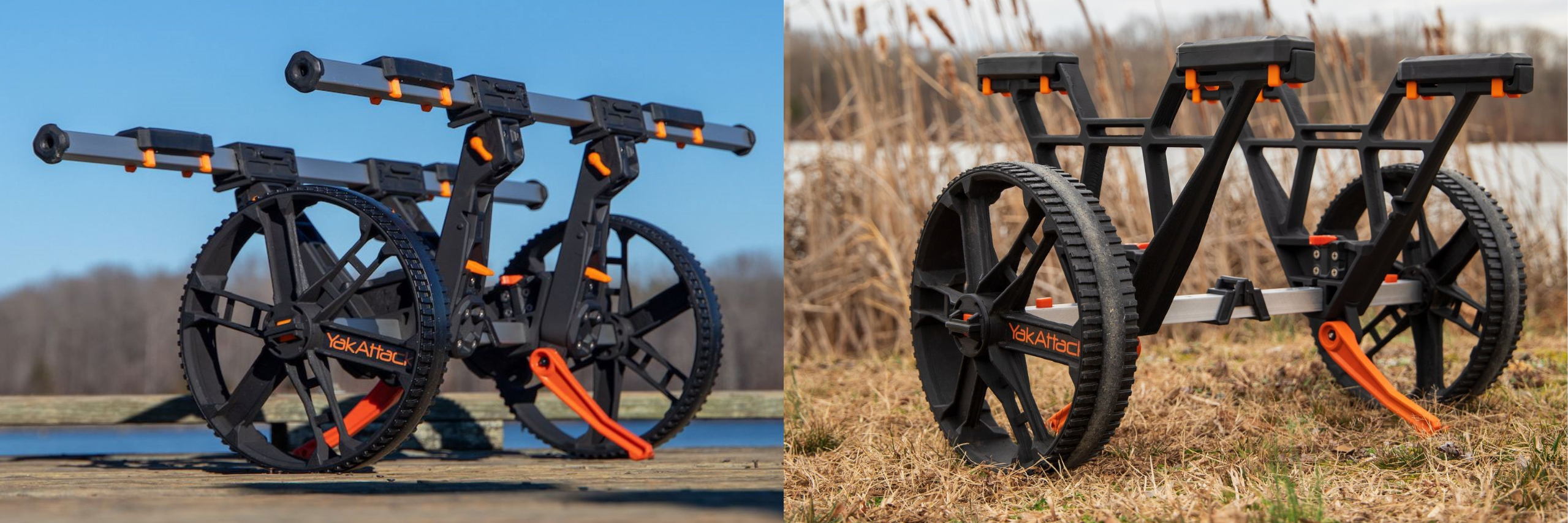
Located at the bottom of this page is a list sorted by brand that shows compatibility images and the recommended setup for our family of kayak carts. We will continue to add to this blog and the individual brand fitment guides as more information and compatibility images become available.
What is a kayak cart and why use one? A kayak cart is a tool, usually with two wheels, that assists the user in safely and efficiently transporting a vessel from one place to another over different types of terrain. Unless you live on your favorite body of water, you've probably already seen or used some type of kayak cart. In this article, we will discuss why you may need a cart, how to use one, the types of carts we offer, and show the compatibility of our TowNStow product line with different kayak brands and popular models of fishing kayaks.
Why would you need to use a kayak cart? For many, getting their kayak to the water is a process that begins with getting the watercraft from the place where it is stored at home, to a vehicle, and then transporting it to the desired destination. If that destination is a public ramp, getting in and out of the water must be quick. Unless you're trailering directly into the water, many kayakers get their rigging done and setup their kayaks in the parking lot and then transport to the water's edge using a cart. If the destination is further off the beaten path, a cart is almost a necessity. For example, a secluded river launch or a coastal surf launch could be far from a decent parking spot. Today's heavier, fully loaded fishing platforms are not fun to drag long distances through challenging landscapes. Having the right cart will make getting to the water an easy process, saving your energy for the adventure ahead.
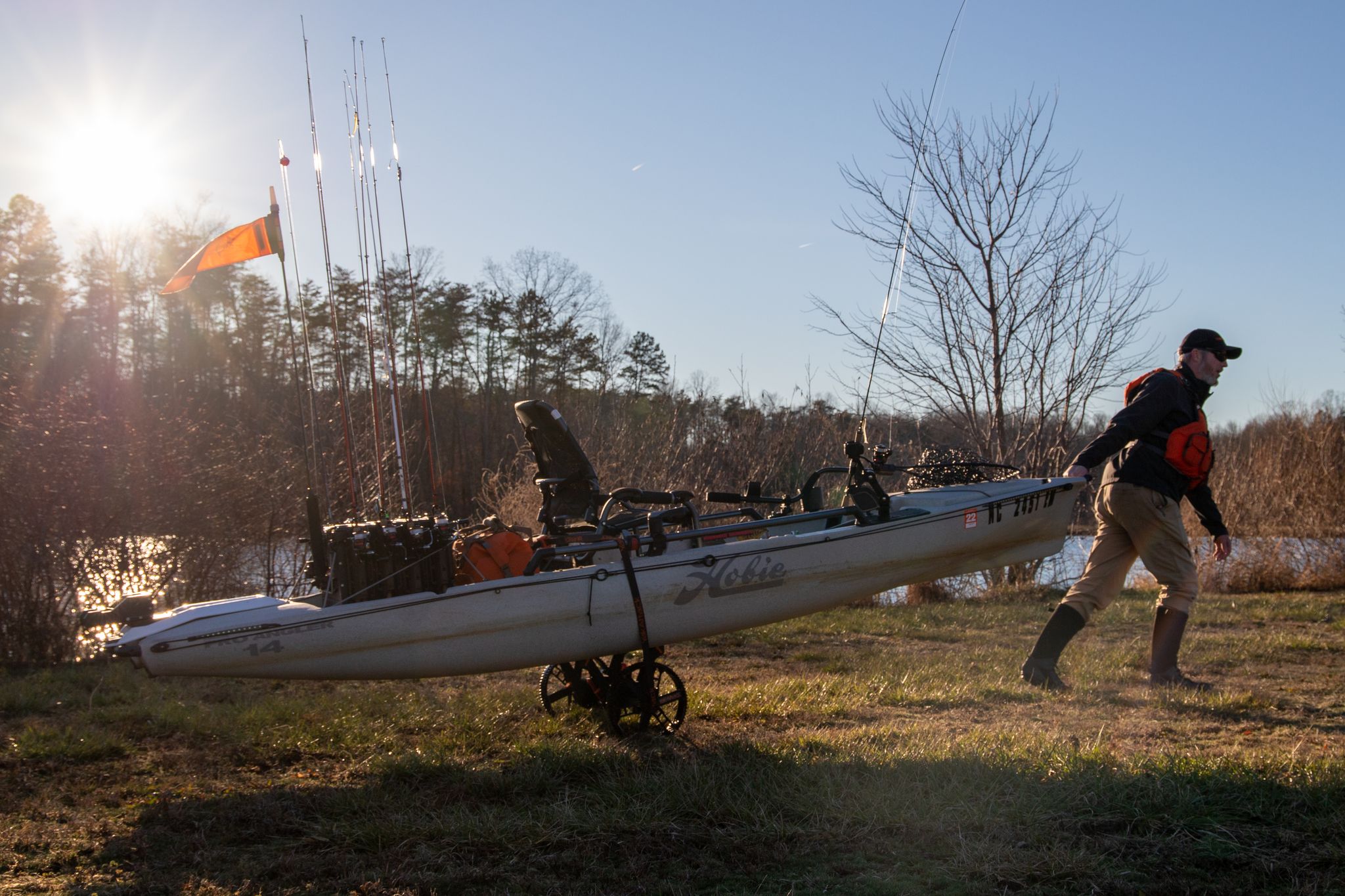
So you've never used a kayak cart before? Well, we're going to tell you how it works. First, you need to identify the type of cart you are using. There are a lot of carts on the market, and not all are designed for modern fishing kayaks like those from Jackson Kayak, Hobie, Bonafide, etc. Most kayak cart designs consist of a cradle or bunk the vessel rests on with two wheels attached to some form of axle or spindle.
Another style is a scupper cart. A supper cart consists of two vertical poles on an axle that go up from the bottom of the hull and through the mid to rear scuppers of a sit-on-top kayak. These carts can create stress on the scuppers, which is a weak point of the kayak, and are only recommended for certain brands of kayaks where the kayaks were designed with the intent of a scupper cart being used. One of the only examples of this is Hobie. Other than that, most kayak manufacturers will not warranty damage caused by aftermarket products, and some brands specifically mention scupper damage as not being covered by their factory warranty. Scupper carts can be lighter in weight and in most situations do not require the use of a tie-down strap since the scupper posts keep the cart in line with the kayak. To load a kayak onto a scupper cart the traditional method is to roll the kayak on its side and insert the posts of the cart into and through the kayak’s scupper holes. A cradle or bunk-style cart will work for a more significant percentage of kayaks, than the scupper cart.
We've seen many different approaches to loading a kayak unto a cart, but we're going to tell you what we think is the easiest way. Before even getting to your destination with a fully rigged kayak, you'll want to find the bunk width adjustment that will work for your particular hull design. The easiest way to do this is to simply flip your kayak upside down and try different adjustments until you find what will work best for you. Once you've done that, you'll be ready to load your kayak with a lot less headache. Start by positioning your kayak and cart flat on the ground beside one another. Align your cart near the center of the kayak to evenly distribute the weight. This spot will differ for everyone depending on how your kayak is rigged. For example, if you have a stern mounted trolling motor, you'll want the cart further back. You'll find that sweet spot with practice, making the rest of the process easier.
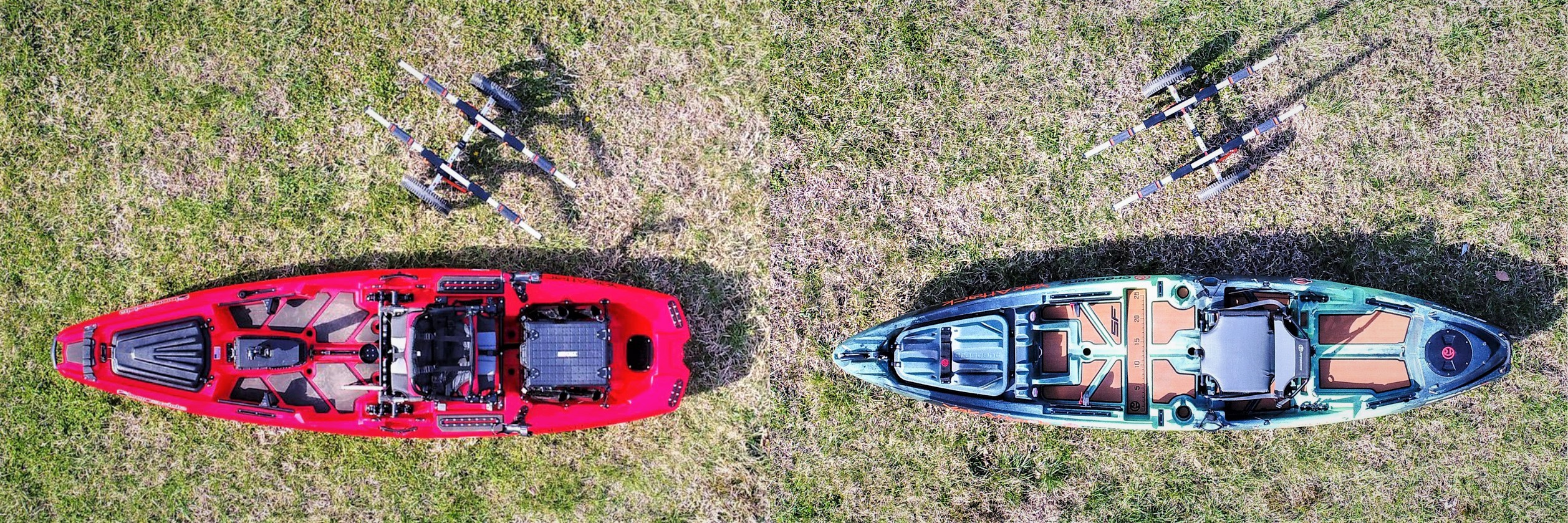
Once you've positioned your cart beside your kayak where you want it, angle the cart to align it with the end of the kayak that will remain on the ground when lifting. Deciding which end to lift will also depend on your kayak and how you have it rigged. If your kayak has a rudder on the stern, picking it up from the bow could damage your rudder. For a kayak like the red Bonafide pictured above, picking up from the bow might work better because the kayak sits flat in the rear and won't rock side to side when lifting. Pick up the kayak high enough to clear the cart, pivot over the cart to align your hull with the bunks, and then rest the kayak down onto the cart.
A cam strap is often required to keep the kayak secured to the cart. This will also look different for most kayaks depending on their size, how it is loaded, and how far you need to transport your kayak to the water.
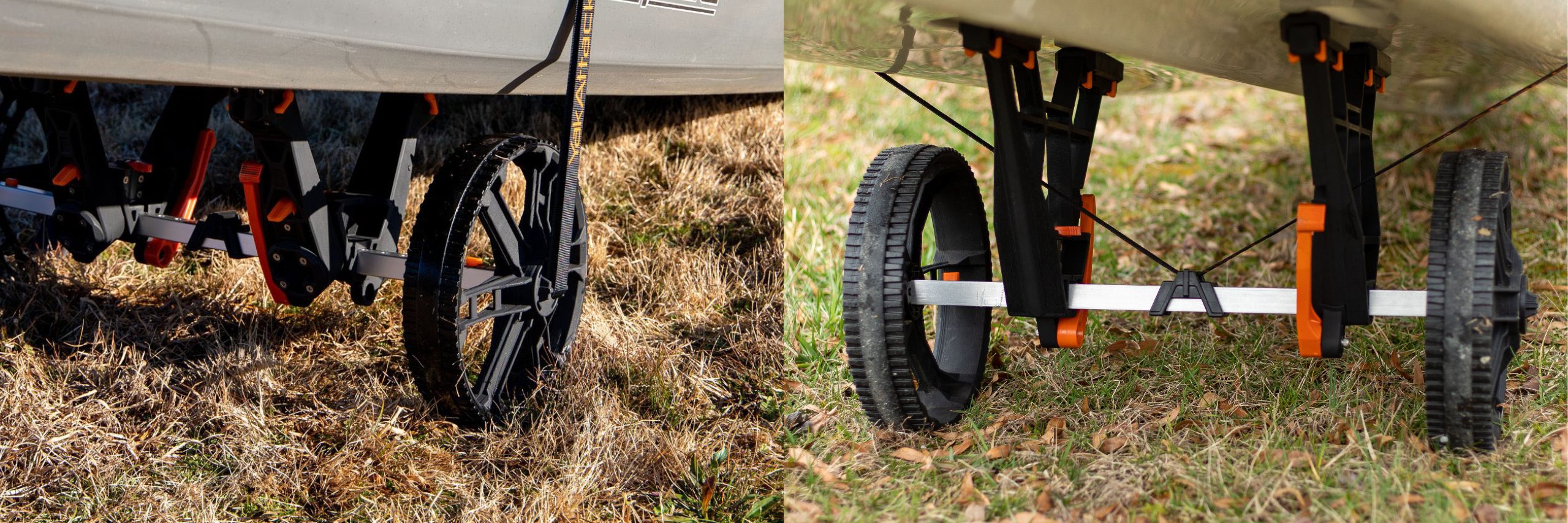
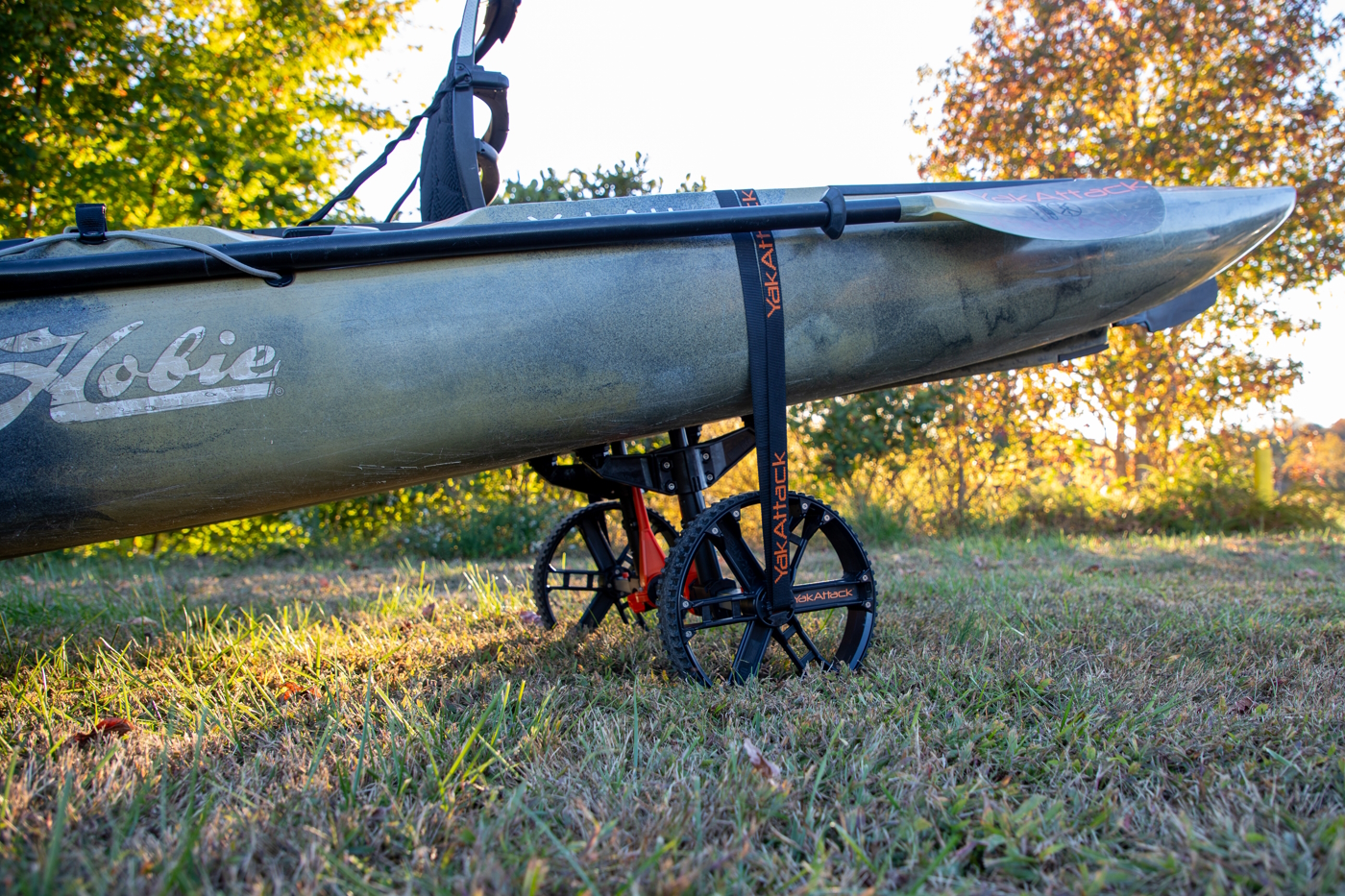
So, you’re at the launch and your kayak is in the water, ready to depart, now what? Sometimes it’s not convenient to take your cart back to your vehicle, and doing so leaves your kayak and gear unattended and susceptible to theft. Maybe you'll need to bring your cart with you for additional portages along a river. Having a cart that is compact and can be stored in the hatch of your kayak could be ideal.
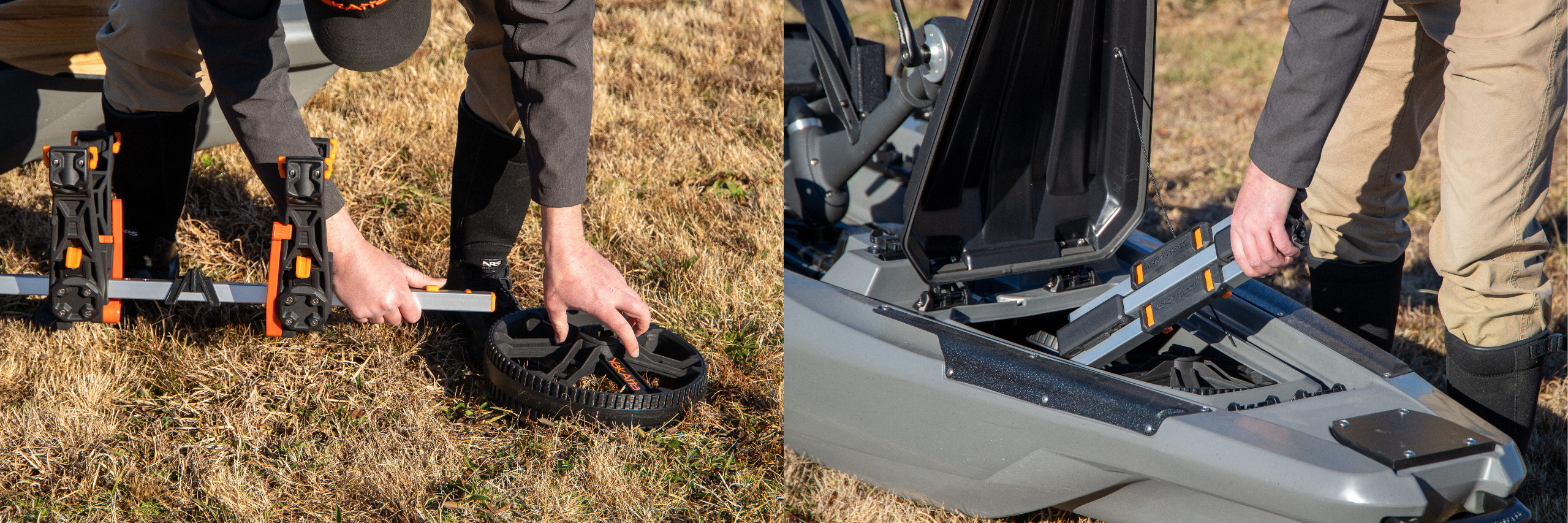
Now that you know how to use a cart and why you could need one, Here are the TowNStow kayak carts we have available. Follow the links below to read all about them.
After 18 months of development, the YakAttack design team has truly redefined the kayak cart category. Combining best-in-class quality and durability with never-before-seen features and functionality, the TowNStow BarCart is one of the most highly engineered and versatile products we’ve ever produced!
Designed for extreme duty, the BarCart is universal, collapsible, user-friendly, and robust, requiring no tools to assemble or disassemble. Nothing about this design is what you’d expect, but your expectation will never be the same after using it. With the push of a button or the flip of a lever, the BarCart can be deployed, adjusted, or collapsed in seconds. And with two bunk bar configurations, it boasts unprecedented compatibility with different hull shapes.
During our design process that resulted in the BarCart, there were other concepts that were too good to ignore. Observing feedback from the BarCart announcement, we knew a simplified version at a lower price point could be a great option to consider to give more depth to our kayak cart offering. With that, the TowNStow Bunkster became the second kayak cart in our TowNStow product line.
The TowNStow Scupper was a result from numerous Hobie kayak dealers requesting our next cart in the TowNStow family be a scupper cart. As of 2023, Hobie is the only kayak brand that reinforces their scuppers for use with a scupper cart and for years a scupper style cart was the preferred choice for many Hobie owners. The TowNStow Scupper Kayak Cart takes what you think a scupper cart should do and turns it on its head. This cart is collapsible, user-friendly, adjustable, robust, and features additional fore and aft hull support. With a push of a button or the turn of a knob, the TowNStow Scupper can be assembled, adjusted, or collapsed in seconds. The classic scupper cart features a pair of posts and rests that support the kayak’s weight right at the radius of the scupper. The trend of larger and heavier sit-on-top fishing kayaks is not going away anytime soon and creates the need for the old school scupper cart to get a facelift. At its foundation, the TowNStow Scupper is a bunk style cart with added scupper post. The weight of the kayak sits entirely on the four rubber bunk pads (very similar to the Bunkster) located fore and aft of the scupper so there is no pressure from the cart at the edge of the kayak’s scupper. The rubber bunk pads conform to the hull's shape, keeping the scupper post in place and preventing the post from racking while in the scupper. To accommodate as many kayaks as possible and to help with any variance in scupper width, the bunks are infinitely adjustable from 5.5” to 14.5” wide. Traditionally, a scupper cart would feature a locking device at the end of the scupper post, like a linchpin, to lock the cart in place once the post has been inserted into the kayak’s scupper. For heavier and wider kayaks such as a Hobie Pro Angler, this can be cumbersome, so to simplify the process, we added a one-way Scupper Barb. The feature will come into play for those transporting their kayaks in the back of a truck bed. With the Scupper Barb deployed you can insert the Scupper Post into the kayak’s scupper holes while the kayak is still in the truck bed overhanging past the tailgate. Once the Scupper Barbs pass through the hull, they will lock in place, preventing the cart from falling to the ground. This feature makes unloading and loading much easier.
What makes these carts different? The Bunkster is a simplified version of the BarCart. While the wheels, axles, dual kickstands, and width adjustments will remain the same, the key difference is the uprights. The Bunkster consists of two solid uprights, fixed in the bunk-style orientation, which will work great for most kayak hulls, but sacrifices the collapsibility found on the BarCart. The BarCart features two chassis assemblies with upright arms that rotate up and down, allowing it to fold into a more compact package for storage. The BarCart also has removable bunk bars, which enable several different functions. First, this will allow you to change the orientation of the bars from the traditional Bunk-Style to the Roof Rack-Style, allowing it to accommodate a much wider variety of hull shapes. The bars also remove for storage, collapsing down from 44 inches to just under 18 inches. Both carts have the same weight capacities because they are built on the same foundation. The axle is what supports the weight. The TowNStow Scupper is only an option if you have a Hobie kayak but in relation to other scupper carts on the market it is one of the most adjustable, compact, and supportive options. If you do not want to unload and roll your kayak on its side to attach a scupper cart the BarCart or Bunkster could be a better option. Choosing which cart you need will depend on your kayak’s hull shape and whether or not you want the versatility to carry almost anything.
Finally, one last thing to consider is the type of terrain you will be using your cart on. We offer two types of wheels for our TowNStow family of kayak carts. The first wheel is our rubber tread BeadLoc wheel that is designed for use on hardpacked surfaces. These wheels work great on boat ramps and firm packed trails and access points. For inland anglers, the BeadLoc wheels are all you will need, but for our coastal anglers, sand can be challenging.
For kayak anglers who frequently launch their kayaks in sandy environments, having sand tires on their kayak carts can make a huge difference in their overall fishing experience. Sand is notoriously difficult to navigate through, especially for small, narrow, or firm wheeled kayak carts. The soft and shifting terrain can cause traditional hard tires to sink and get stuck, making it nearly impossible to transport a kayak to and from the water's edge. This not only adds unnecessary stress and frustration to the already physically demanding task of loading and unloading a kayak, but it can also waste valuable fishing time. Sand tires, on the other hand, are specifically designed to tackle the challenges of sandy environments. These tires are wider and have a larger surface area, allowing them to distribute the weight of the kayak and cart more evenly, preventing sinking and getting stuck. This means kayak anglers can easily maneuver their carts over sand dunes, through soft beach sand, and even in shallow water without worrying about their cart getting stuck. Each of our carts is sold with the option of sand tires or rubber tread wheels.
Kayak Brand Compatibility
If you are interested in the recommended configuration (tie down point, bunk orientation, bunk width, and placement) here is a list of compatibility images sorted by kayak brand for our kayak cart product line. We will continue adding new compatibility images as new models of kayaks are released or as we get request from customers. This list and the compatibility pages listed below will be updated on a frequent basis. If you have a specific make/model of kayak that is not shown below or on each brand page please send a request to support@yakattack.us and we will work towards continual development of this resource.
- Ascend Kayaks
- Bonafide Kayaks
- Crescent Kayaks
- Eddyline Kayaks
- Feelfree Kayaks
- Hobie Kayaks with BarCart and Bunkster
- Hobie Kayaks with Scupper Cart
- Inflatable Kayaks (All Brands)
- Jackson Kayaks
- Native Watercraft Kayaks
- NuCanoe Kayaks
- Old Town Kayaks
- Perception Kayaks
- Vibe Kayaks
- Wilderness Systems Kayaks

